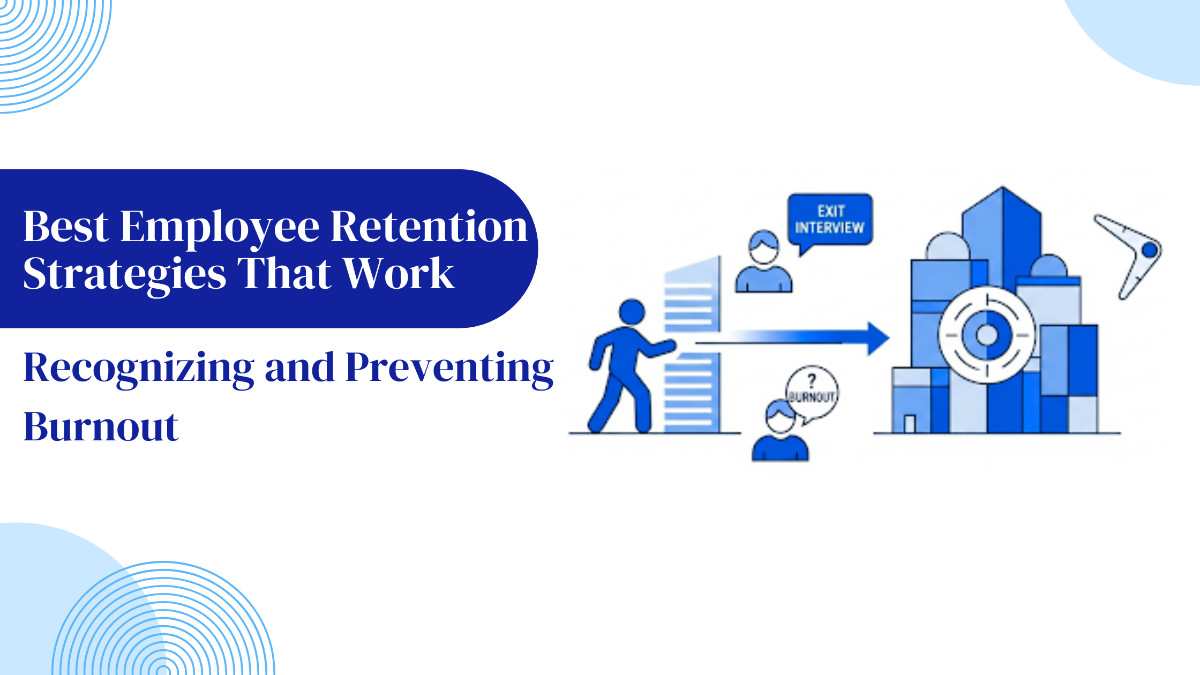Unlock the Best Employee Retention Strategies That Work
Discover powerful employee retention strategies by learning from employee departures. Start improving your retention approach today!

Employee retention is more than just keeping staff; it’s about understanding why people leave and using those insights to strengthen your workplace. In this article, we’ll explore how employee departures offer valuable lessons that can shape your retention strategies, reduce turnover, and create a more engaged workforce.
Introduction: Every Exit Is a Signal
In the ever-evolving landscape of the modern workplace, employee departures often leave behind more than just vacant desks—they leave behind invaluable insights waiting to be unearthed. Imagine a world where exit interviews are not just formalities, but treasure maps leading to a deeper understanding of your organization’s pulse. In this blog, we explore the transformative power of listening to ex-employees through an employee community lens. Because, at times, it’s the ones that leave who can teach us most about how to keep others.
1.Exit Interviews: Hidden Truths
Discovering the Honesty of Departures
When an employee chooses to leave, it’s not a loss—far from it—there’s an opportunity. Exit interviews, sometimes dismissed as mere formalities, are the key to discovering what really motivates employee choices. Disgruntled former employees are more honest, raw, and willing to tell it like it is. Their input, when plugged into an employee community, is a compass for charting retention solutions.
Turning Individual Stories Into Collective Wisdom
- Picture this: exit interviews anonymously shared in the community so that current employees can view patterns and trends.
- Maybe it’s a common complaint about a specific manager, career stagnation, or burnout.
- When these facts are exposed, organizations can shift, adjust, and change.
An engaged employee community makes individual stories collective wisdom, allowing organizations to not only plug the hole but strengthen the whole ship.
2.Culture > Perks
Looking Beyond the Obvious
It’s tempting to attribute exits to salary offers or improved perks elsewhere. But look closer, and you’ll usually find culture as the underlying reason. Ex-employees usually point to reasons such as lack of recognition, communication issues, or feeling undervalued—problems that are highly cultural, not transactional.
Alumni as Cultural Mirrors
- A community of employees becomes a barometer of culture.
- Exit feedback shines a light on where culture is healthy—and where it’s toxic.
- Former staff recall being unseen, unheard, or undervalued—turn those stories into action steps:
- Launch recognition programs
- Reshape communication channels
- Build open spaces for feedback
A culture that hears from its alumni is a culture that learns.
3.Burnout: Quiet but Costly
Recognizing the Quiet Signals
Burnout isn’t necessarily a scream. Occasionally, it’s the quiet disengagement, the late deadlines, or the “checked-out” attitude. Exit employees frequently tell of a slow burn—the gradual drain of energy, passion, and emotional commitment. These are stories of gold.
Acting Before It’s Too Late
- Use an employee community to spot burnout patterns:
- Are individuals resigning from the same department?
- Is there a trend around complaints about workload?
- Exit feedback reveals:
- Unrealistic expectations
- Lack of support
- Ambiguous roles
With this knowledge, organizations can act early:
- Reassign workloads
- Implement mental health days
- Train managers in empathetic leadership
Stopping burnout becomes a common goal, fueled by those who experienced it.
4.On boarding to Off boarding: A Continuous Feedback Loop
Using the Past to Guide the Future
Employee experience is not a straight line—it’s a loop. What if onboarding was guided by off boarding? What if recruits could learn not only from guidebooks, but from the raw stories of alumni?
Building a Living Institutional Memory
- A community of employees makes continuity possible:
- Departing employees leave behind tips, dos and don’ts, personal anecdotes
- That knowledge enhances onboarding and company memory
- Former employees can reverse mentor:
- Share what they wished they’d known sooner
- Help new hires avoid common pitfalls
It makes exits not endings, but transitions—and each voice contributes to the future.
5.Recognition and Belonging
What People Miss (and What That Says)
When asked what they missed most upon leaving, many ex-employees say not the checks, but the people. The camaraderie. The spontaneous celebrations and peer acknowledgments that made the job feel human.
Making Recognition a Cultural Norm
Exit feedback often reveals:
- Lack of consistent recognition
- Cliquishness
- Isolation
An employee community can surface these issues and guide solutions:
- Peer-to-peer recognition systems
- Encouraging inclusiveness
- Celebrating small victories
When alumni say how a simple “thank you” helped—or how its absence hurt—it’s a powerful call to make acknowledgment an everyday cultural thread.
6.The Boomerang Effect
The Power of a Graceful Exit
Not all departures are forever. The idea of “boomerang employees”—those who leave and come back—is gaining popularity. But rehires happen only when the departure was respectful, and the bond was maintained.
Building Long-Term Brand Advocacy
- An employee community acts as a bridge:
- Keeps past employees informed, involved, and appreciated
- Fosters brand loyalty
- Encourages referrals and return hires
When exit feedback is heard and acted on, it builds trust. It shows the organization values growth and welcomes return—not with grudges, but with grace.
Conclusion:
In the age of talent wars and quiet quitting, the most intelligent organizations are not merely hearing from those who remain—they’re learning from those who depart.
- Exit interviews become tools for insight, not afterthoughts.
- An employee community converts lessons into action.
- Raw alumni observations become organizational change.
Every resignation is a story. Every story holds a lesson. And when shared through a vibrant employee community, every lesson becomes a building block for a workplace where people don’t just join and stay—but grow, belong, and thrive.
Suggested Blogs
Let’s discuss the idea
Join hundreds of companies transforming their corporate communities with Almashines






